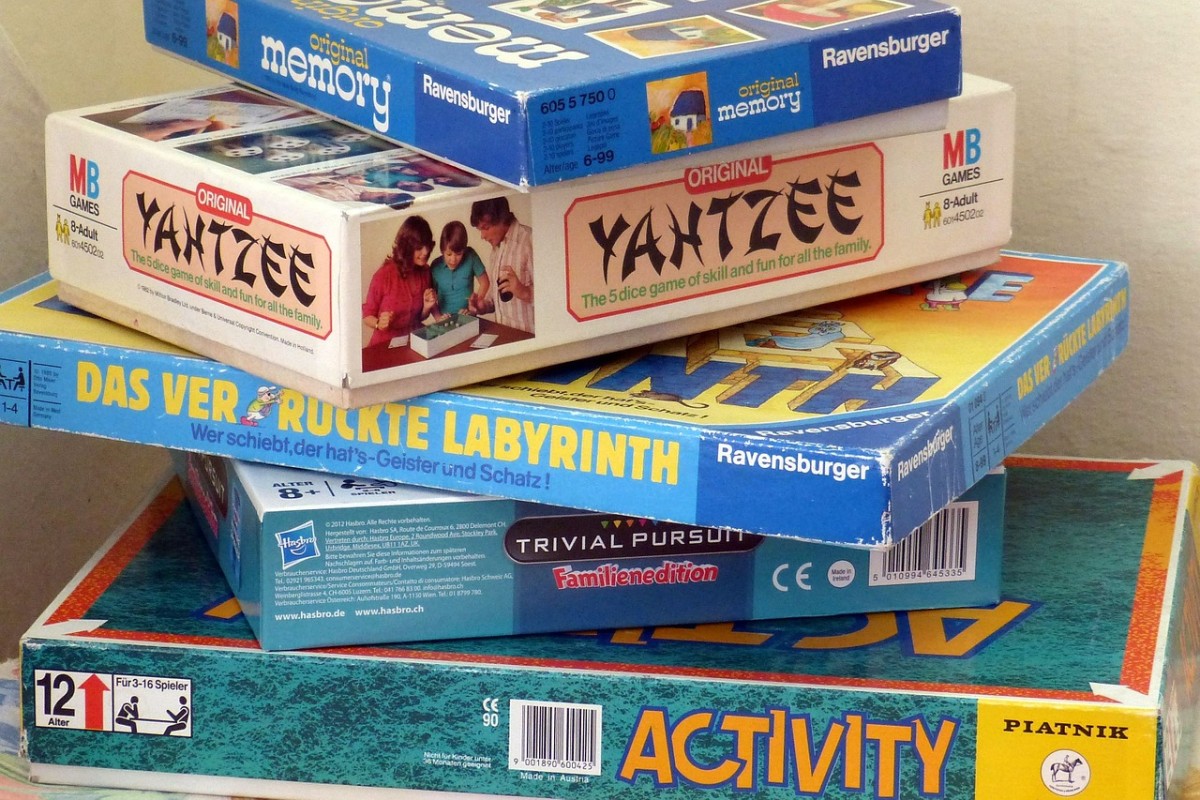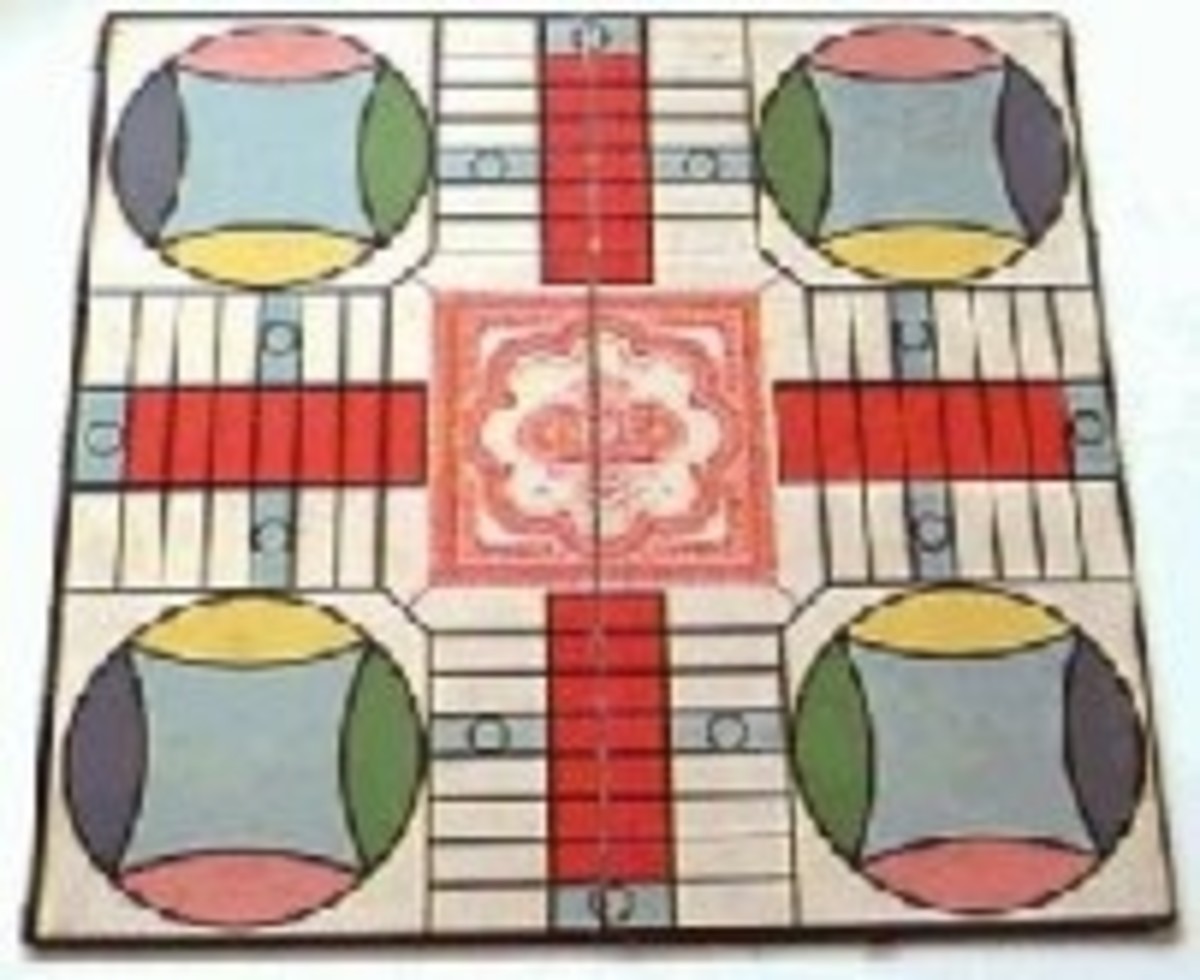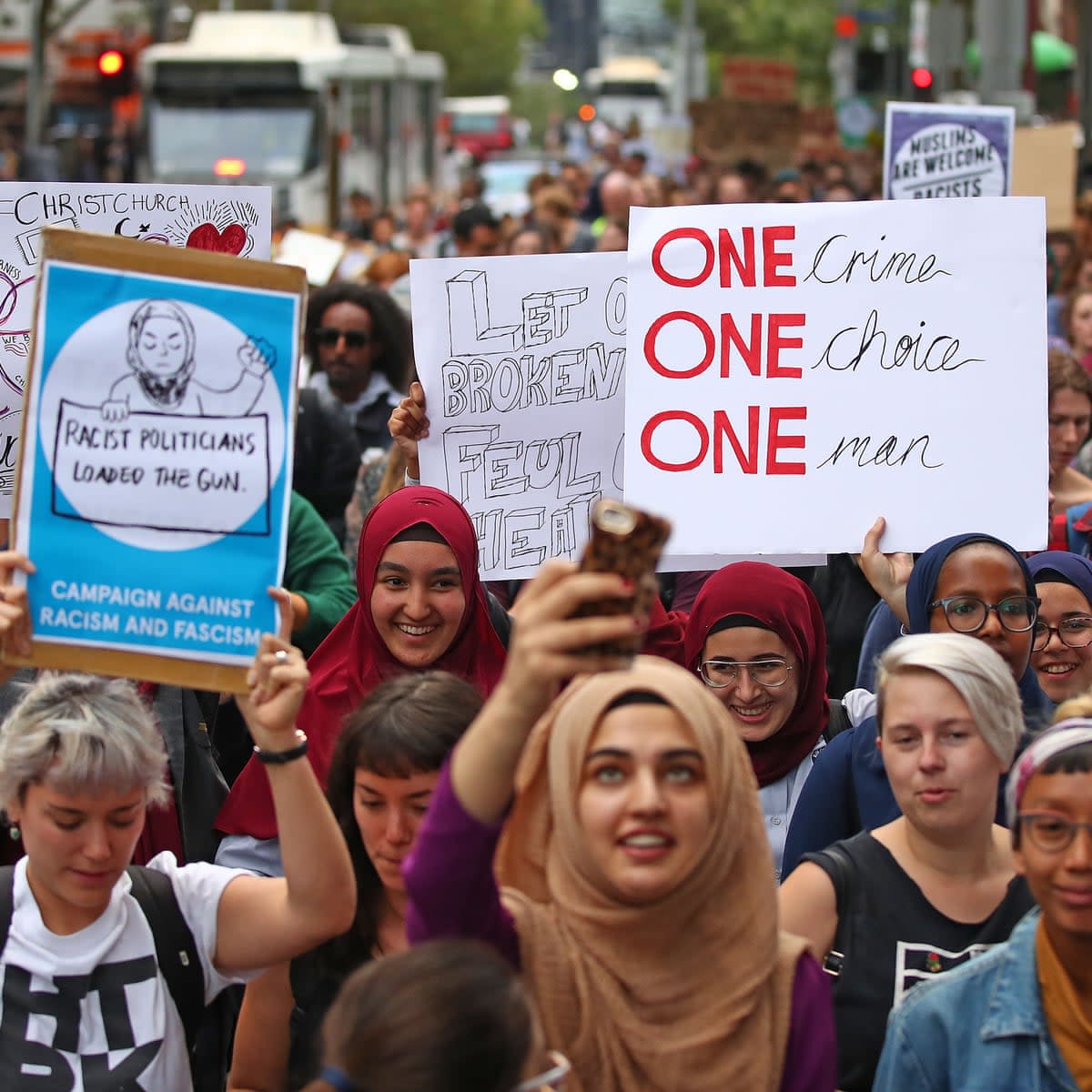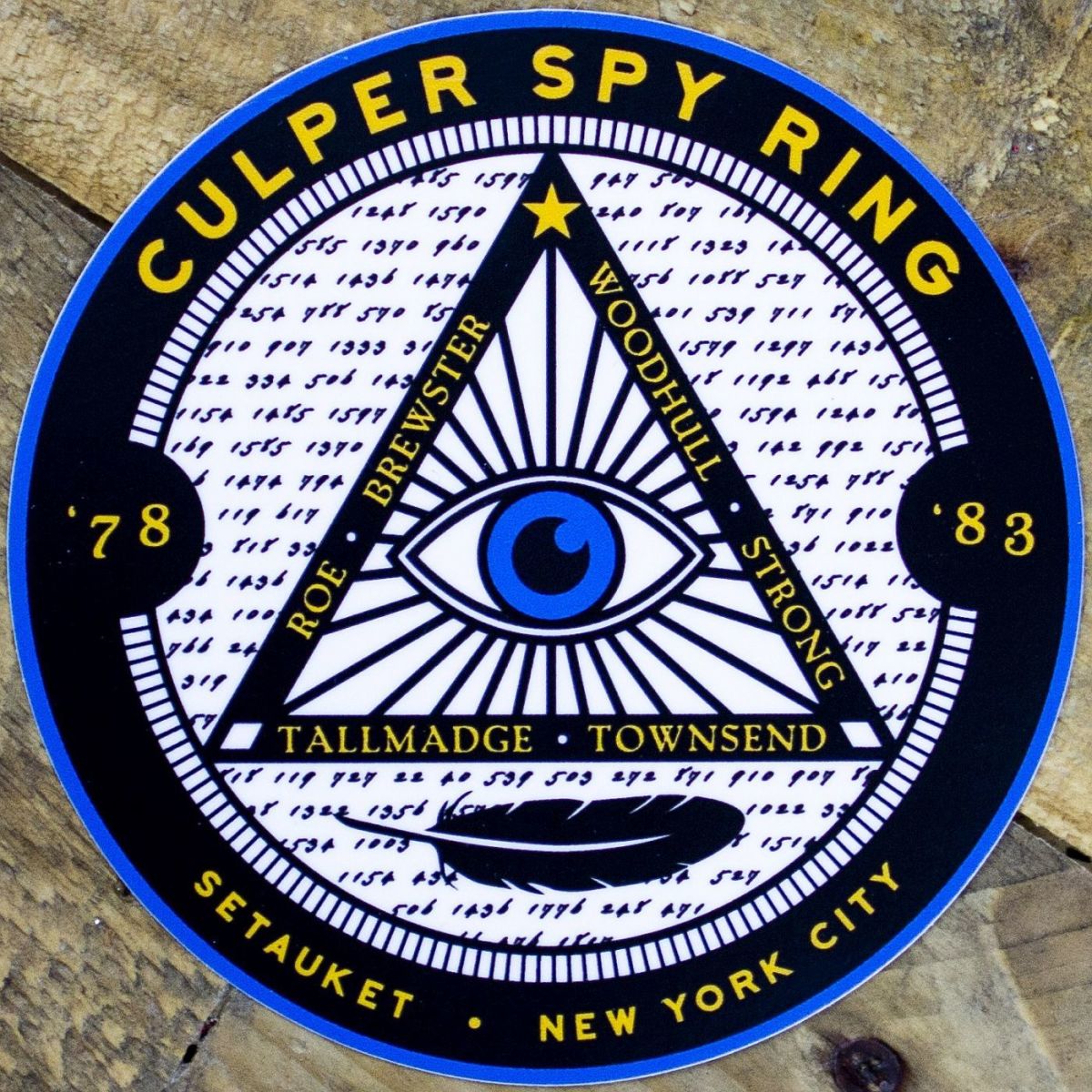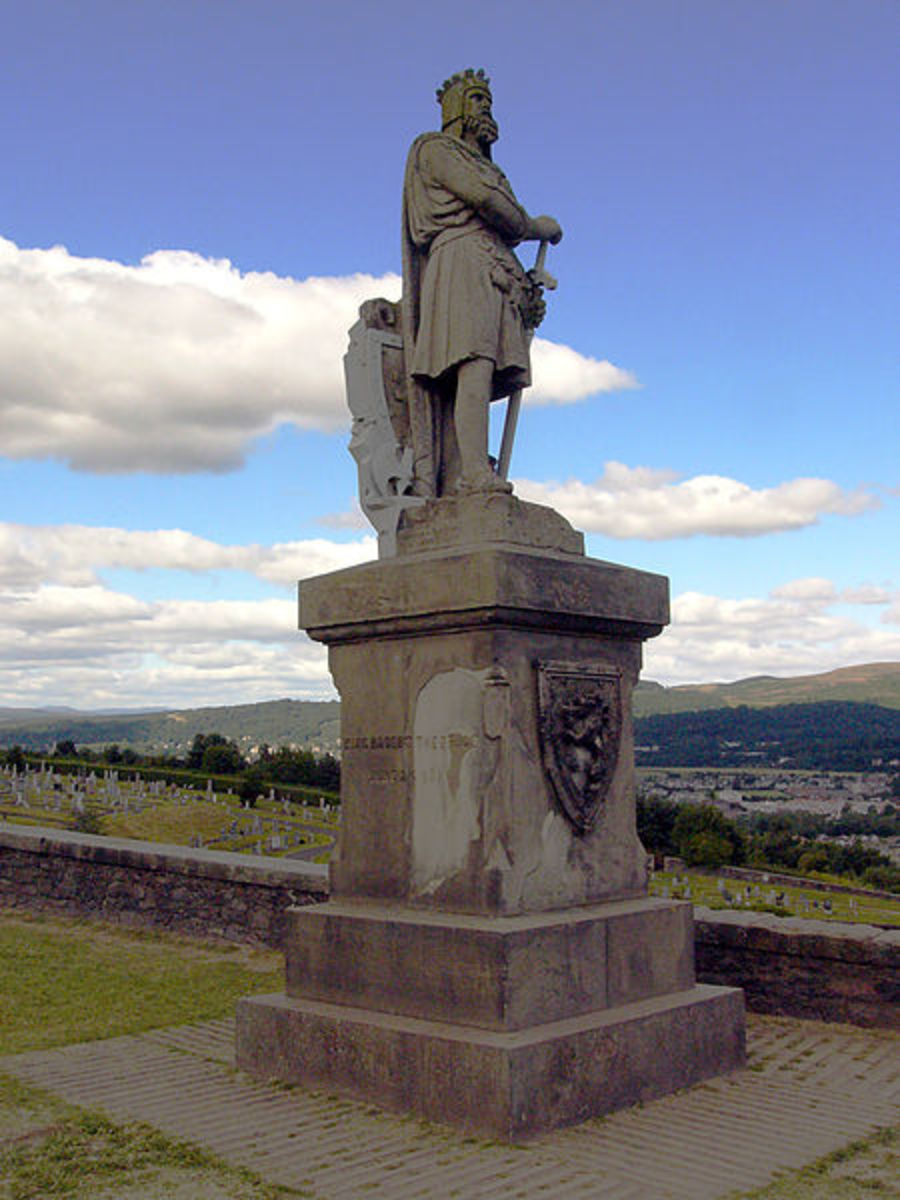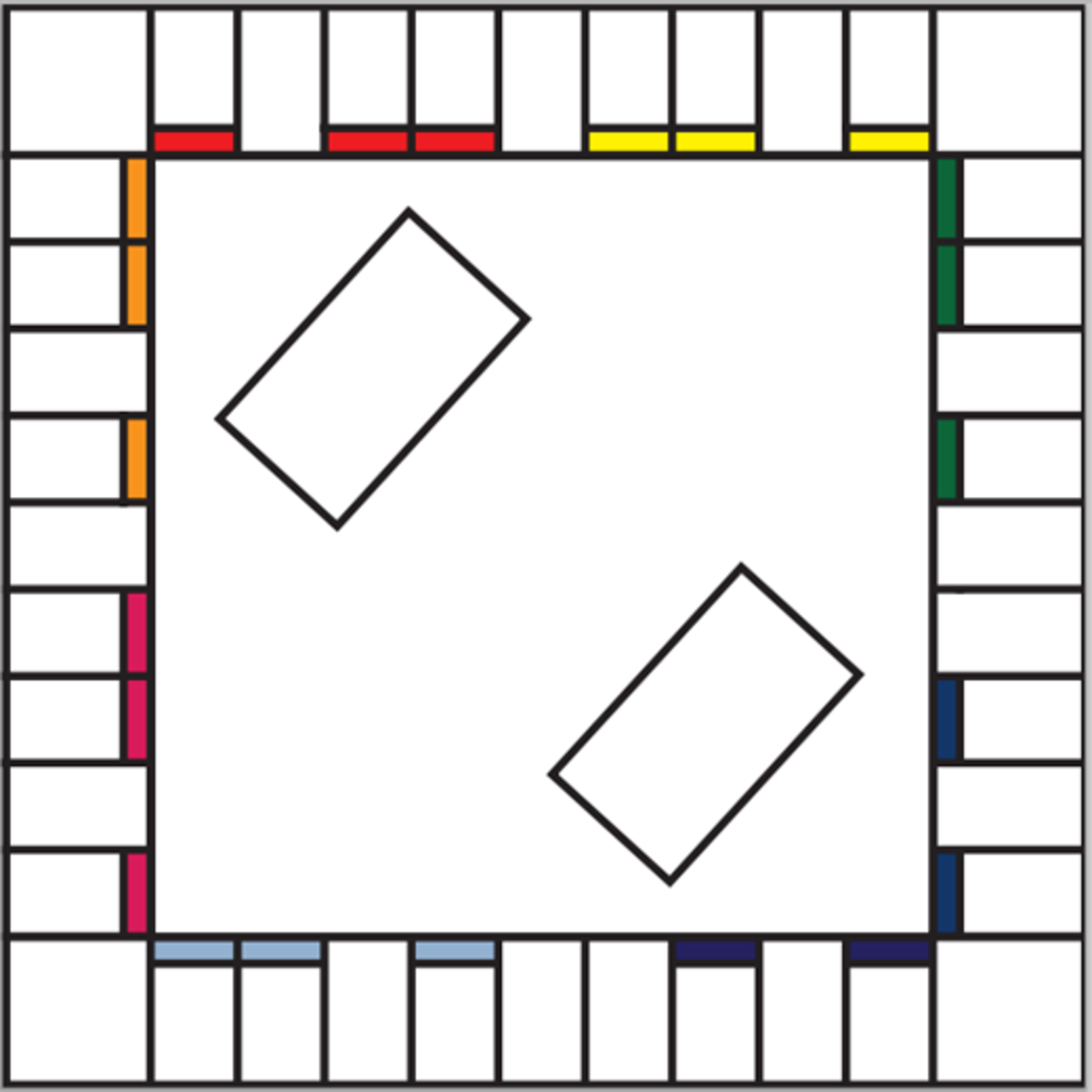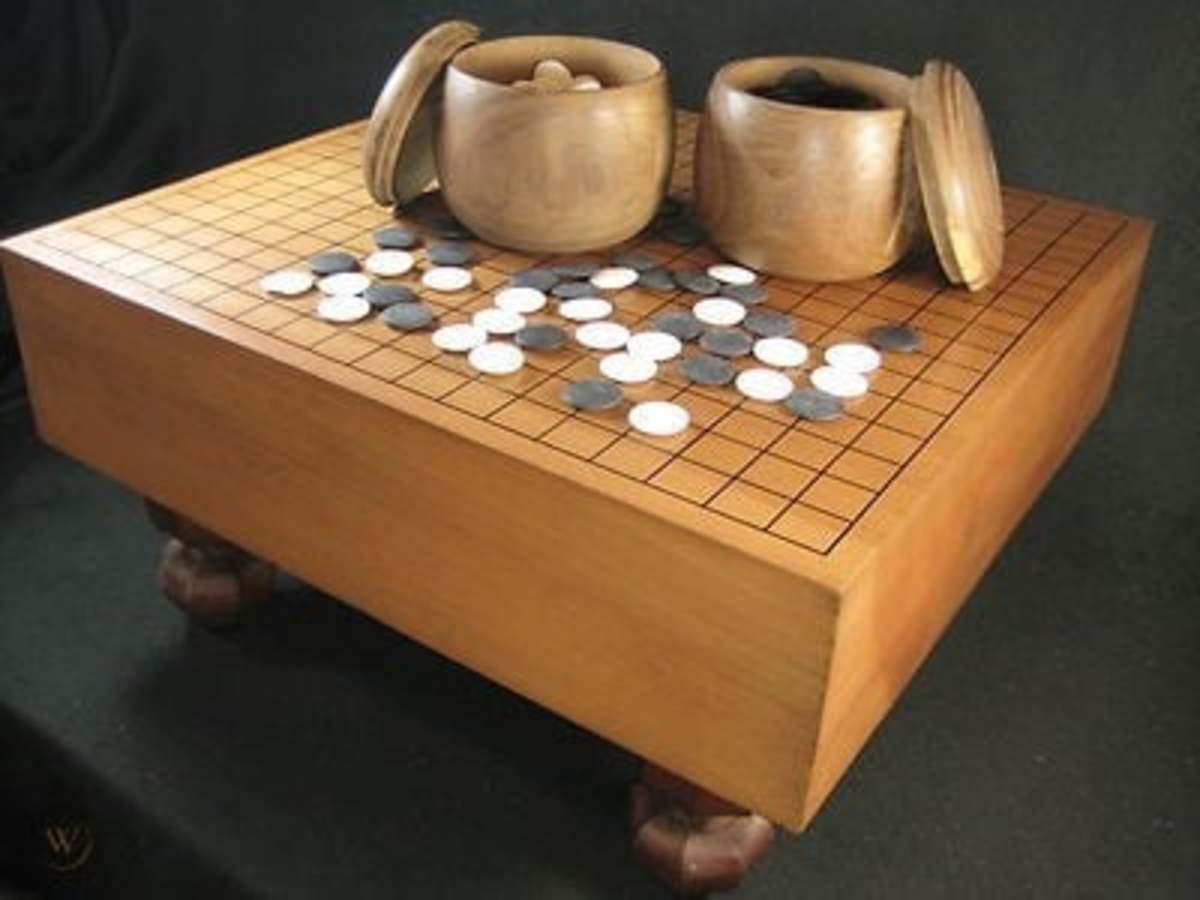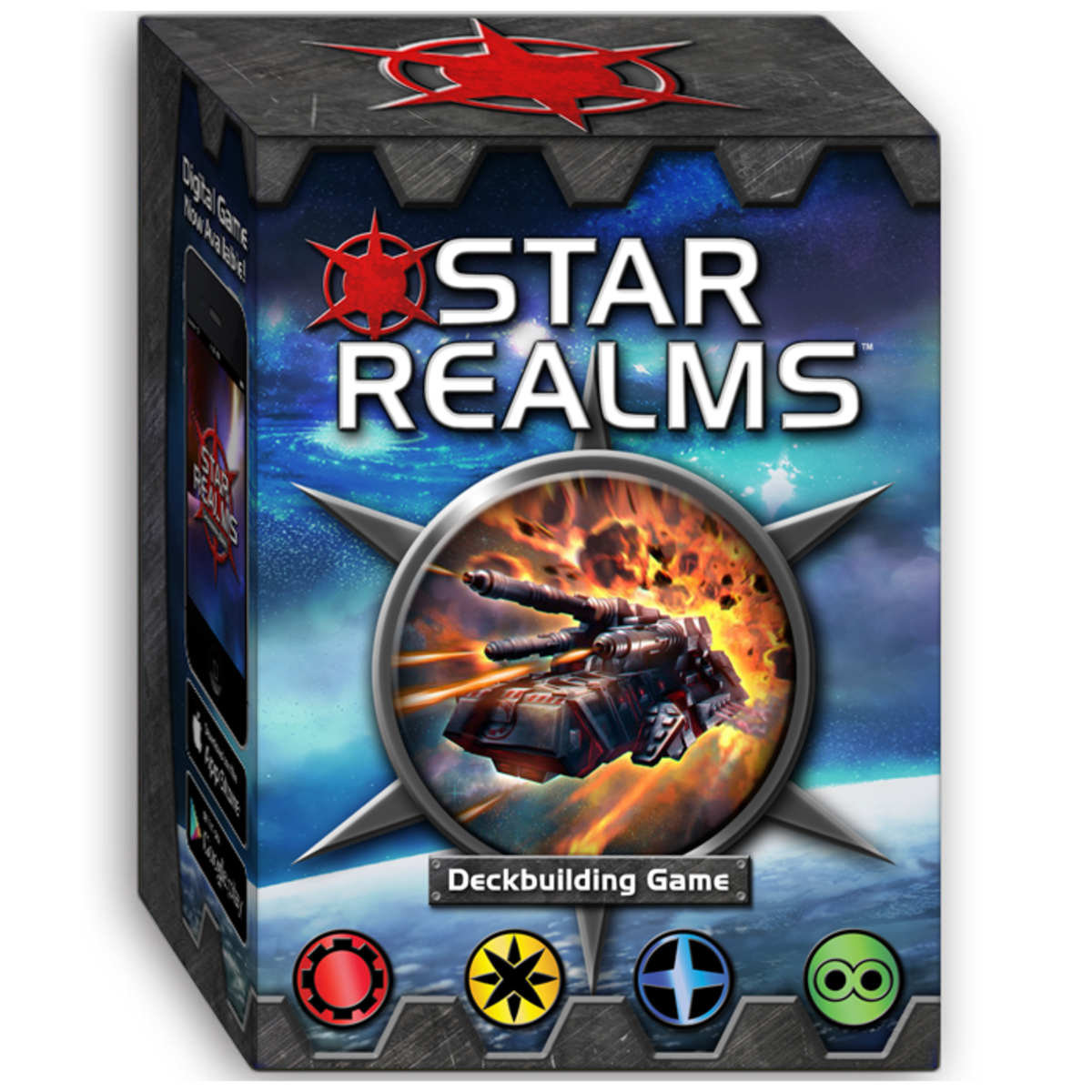How To Play War Of The Ring
War of the Ring Board
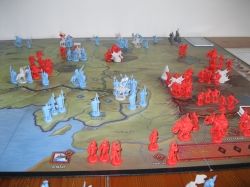
War of the Ring Mechanics and Strategy
War of the Ring, a board game based on Lord of the Rings, takes players through the grand scale, army-bashing conquests loved by LOTR book and movie fans everywhere.
At the same time, it allows you to experience the struggle of the ring bearers to get their precious cargo to Mount Doom ...or the efforts of Sauron as he attempts to reclaim it - depending on which side you are playing!
Having played through several games already, my son and I have got a solid handle on it all and are starting to try out different strategies.
This article will be the first of a series looking at the mechanics of the game (how it plays) and some strategies that may help you to win as either player.
Along the way, I hope to clarify some common mistakes made with the rules (yes, we made them too!) and some "good" moves you can pull out at different moments to make your enemy squirm!
Note: this article deals with the Second Edition of War of the Ring, which is the version I own.
All pictures in this article taken by me, unless otherwise stated.
War Of The Ring On Amazon

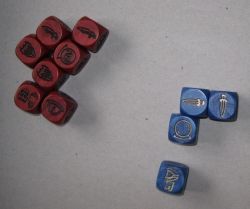
Action Dice
How To Play War Of The Ring
The action dice are the core component of War of the Ring, so that's where I will start.
As far as I know, they are unique to this game.
As a result, they can fool the beginner into thinking that they are not that special, other than being a complication to the already impressive rule book!
However, nothing could be further from the truth.
Everything stands or falls on the proper usage of the Action Dice.
To really get to grips with them, it's important to understand how they link in with the event cards and pretty much all the other parts of the game.
I don't want to reproduce the entire rule book in this article, but some discussion is in order.
Two aspects of the Action Dice jump to mind:
- What you can do with them
- How many you have
Read on to find out more.
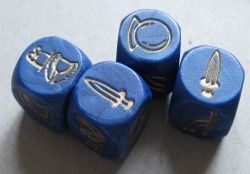
Action Dice: What You Can Do
The best place to start is the player aid charts included with the game.
These show you the icons and the options you have for each die:
- Character
- Army
- Muster
- Event
- Eye (Shadow player only)
- Will of the West (Free People's player only)
As noted in the charts, the Shadow dice are slightly different to the Free People's dice.
As well as the Eye/Will of the West icons, the Free People's dice only have Army icons combined with Muster icons.
This is actually a good thing, as it gives more flexible options.
Taking them in (almost) reverse order from the above list, read on to find out hints and tips on how each action works.
Will Of The West Action Die
Allows the Free Peoples player to use it like a "wild card" as any other symbol on the die.
Also allows for Gandalf the White, or Aragorn - Heir to Isildur to come into play, according to the rules on their dice.
There's not much strategy involved with this one, other than:
- If you are in a position to get Gandalf the White, or Aragorn, then do so!
Apart from their special powers, you will get an extra action die from the next turn onwards (you can never have too many action dice).
Besides, you may not roll another Will of the West for several turns, so use it while you can.
Tip: If you have been lucky enough to roll more than one Will of the West on the same turn, it can be tempting to hoard them until later in the turn.
However, be careful about doing that, because the Shadow player could have a nasty event card that makes you discard them all!
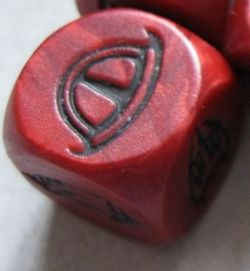
Eye Action Die
Nice and simple: any eye dice rolled by the Shadow player are immediately added to the Hunt box.
Simple, but it can make it difficult for the Shadow player to decide how many dice to allocate at the beginning of the turn. (See later for more discussion about this topic)
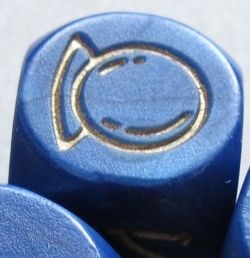
Event Action Die
Either play any event card, or pick up a new event card from either deck.
Character event cards are mainly related to characters (funnily enough), either ones you play with or "special" people that were in the books, such as Tom Bombadil.
Strategy event cards are usually related to armies: movement, special attacks and mustering.
These are often good for allowing armies to be mustered when a nation is not yet "at war" or into a stronghold that is currently under siege.
Tip: Remember that you can still play event cards without using an event die, as long as the symbol on the card matches the die.
For example, you might have a muster event card in your hand, which could be played using a muster die.
This could allow you to play a second card using a separate event die roll in the same game turn.
Poll
How easy is War of the Ring to understand and play?
Political Track
Check out the picture below, which shows the political track at the beginning of the game.
Reading from bottom to top, Sauron and Isengard are closest to war, followed by Southrons/Easterlings and Gondor.
Furthest from war are the North (men), Dwarves, Elves and Rohan.
However, the Elves are already activated from the start...

Muster Action Die
This action will be different for nations that are at war, compared to those that aren't.
A nation that is at war can put new units into play at any of it's own settlements (towns, cities and strongholds); the player aid charts show you what combinations of units are allowed.
If a nation is not at war, then you can't muster units, but can move its political counter 1 step towards the "at war" box.
However, most Free Peoples nations are not "active" at the start of the game and cannot be moved into the at war step, even if there is a muster die available.
Inactive nations are represented by their political counter being upside down.
Tip: any attack on an army will automatically activate the nation to which it belongs and move the political counter another step along the political track.
The Free Peoples player can take advantage of this by placing his armies in the path the Shadow player armies are likely to take.
In this way, you can limit the number of muster dice that you have to use, just for moving the political counters.
In addition, a small army can hold off the Shadow player, just because Sauron doesn't want to push that nation to war yet!
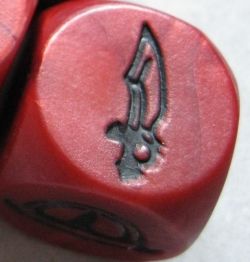
Army Action Die
An army die allows you to:
- Move 2 different armies to an adjacent region or
- Attack with 1 army against 1 adjacent region
An "army" is defined as any number of army units in the same region, along with any leaders and/or characters that may be present.
You are not allowed to move the same army more than one region, but you could for example, split an army up and move the two halves to two different regions.
Tip: if the defending army is in a region with a friendly stronghold when they are attacked, then they can choose to withdraw into a siege before any battle starts.
The defending army is then placed in the stronghold box on the left hand side of the board and the attacking army can advance into the region.
Strongholds are much easier to defend, which is good news if you only have a small army (I'm looking at you, Free Peoples player!).
Just remember that the stacking limit is 5 armies in a stronghold, instead of the usual 10.

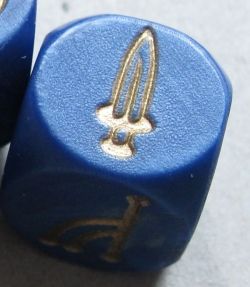
Character Action Die
The Character action die is the most complex as there are so many possible options.
You can:
- Move the Fellowship 1 step on the Fellowship Progress track (Free Peoples only)
- Hide the Fellowship (FP only)
- Separate companions from the Fellowship (FP only)
- Move any or all characters (Companions for the Free Peoples, Nazgul and minions for the Shadow) according to their movement rules
- Move 1 army with a leader
Tip: The ability to move an army with a leader on a Character action die roll, is one often overlooked by beginning players.
This is useful because it can allow an army to move more than once in a game turn: once with an army die and again with a Character die (as long as a leader is present).
As long as you have a leader present, the army they are with can use this die to attack too.
Leaders also give you extra "re-rolls" in combat which can turn previous 'misses' into hits.
This means that leaders are more useful than they first appear.

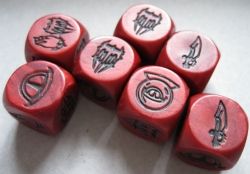
Action Dice: How Many You Get
Since action dice give you choices each turn, it stands to reason that the more you have, the better.
However, both players have to balance the pros and cons.
Free Peoples
Einstein once famously said "everything should be as simple as possible, but no simpler".
In the same way, the Free Peoples player will generally want to get Gandalf the White and Aragorn - Heir to Isildur as soon as they can ...but no sooner.
While they are still in the Fellowship, they have some great abilities:
Gandalf allows the FP player to draw another event card every time they play one, without having to spend an action die.
Aragorn can hide the fellowship using any action die, not just a Character roll.
This could be crucial in the late stages of the game, if the ring bearer already has high corruption.
Shadow Player
The Shadow player has similar choices.
With more action dice, he is more likely to keep his military campaign going while still keeping an eye out (pun intended) for the ring.
Bringing Saruman to the party early on is a no brainer, as he gives an extra action die.
In addition, he can turn Isengard Regular armies into Elites and allows the Elites to double up as leaders.
However, he can't move and is vulnerable to several event cards that the Free Peoples player has access to.
Have a look at the 3 "Ent" events cards to see what I mean:
It is possible for the Free Peoples player to hold up the Shadow, just by moving a companion to Fangorn forest while Gandalf the White is in play.
Even if the FP doesn't actually hold an Ent card, the Shadow player is likely to be extra careful.
The Witch King is arguably the most powerful character in the game, but once he enters play all Free Peoples nations automatically go straight to "At War".
The Shadow player may therefore hold off on bringing him in, unless the ring is getting too close to Mount Doom for comfort.
Balance
Like so much of the game, it is all about balance.
For the Free Peoples player, the best offence is to keep the ring moving whenever he can, but the best defence is to keep hold of his strongholds for as long as possible.
The best offence for the Shadow player is to keep taking down enemy strongholds and cities.
The closer the Shadow is to getting 10 victory points, the more likely the Free Peoples player is to try moving the Fellowship just that little bit further each turn, and hence may fall foul of the Hunt.

Hunt Box
Picture below: The Hunt Box part way through a turn.
The Shadow allocated 1 die at the beginning of the turn, then got another eye as part of his Action dice roll.
The Fellowship has been moved once, so the die that was used for this purpose has also been added.
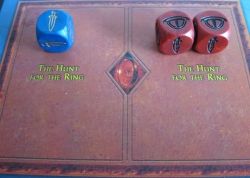
The Hunt
Which brings us to another important discussion about the Hunt for the Ring.
At the beginning of each turn before the action dice are rolled, the Shadow player allocates 1 or more dice to the Hunt, by placing them in the Hunt Box.
- The Shadow player can only allocate as many dice as there are companions still in the Fellowship.
- If the Free Peoples player took back at least one die from the Hunt Box at the beginning of this turn, then the Shadow player MUST allocate at least 1 action die.
The remaining dice are then rolled as normal (see above) and any Eye results are also added to the Hunt Box.
The more dice are in the hunt box, the more likely the Shadow player is to damage or slow down the Fellowship.
The Free Peoples player will add a die to the Hunt box after each time he moves the Fellowship Marker on the track.
Rules clarification:
This confused us a little bit in our first couple of games, so here are some pointers:
- The number of Shadow player dice in the Hunt box decides how many combat dice he rolls when hunting for the ring
- Each Free Peoples player die currently in the Hunt box adds 1 to the Shadow player's roll for the hunt
- Any successful hunt roll results in the Shadow player -taking one Hunt Tile from the "cup"
- Only if an EYE tile is drawn does the number of successful rolls matter, as the corruption damage equals the number of successes
For example, if there are 2 Shadow action dice and 1 Free Peoples action die in the Hunt box then:
- The Shadow player would roll 2 combat dice for the Hunt
- He would add 1 to each die (because of the FP action die), "succeeding" on a 5 or 6 on either die
- If he rolled 2 successes and then drew an eye tile, he would do 2 corruption damage to the ring bearer. If he drew a "normal" tile he would only do the same damage as the number on the tile.
From experience, 2 or 3 dice is a good "working number" to have in the Hunt Box, as it gives the Free Peoples player pause for thought while still allowing a balance with your military campaign.
However, you wouldn't necessarily want to allocate 3 dice up front because you might then roll another 2 or 3 eyes, leaving only 1 or 2 dice to actually play with...
My recommendation is therefore to start out with allocating 1 or 2 dice each turn at the beginning of the game and then up the number later on, if you feel it's necessary.
Helpful Links
- Ares Games War of the Ring Strategy
Strategy for War of the Ring on the Ares Games website. Contains a number of useful PDF files on different aspects of the game. - Player Aid Chart
Downloadable copy of the Player Aid Chart (PDF) on the Ares Games website. Includes descriptions of the Action Dice, as featured in this article. You get 2 copies with the game, but you can get spares ...or have a look if you are thinking of buying i - War of the Ring Board Game Review
My very own review of War of the Ring, right here on Squidoo!
Comments Please
Have you played War of the Ring?
Have you found this post helpful?
Then let me know in the comments
© 2013 Tim Bader

